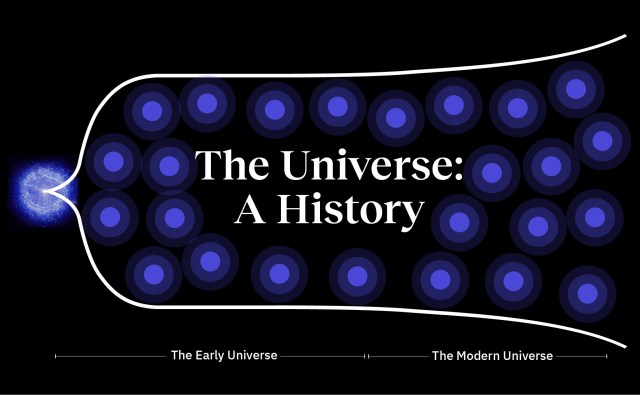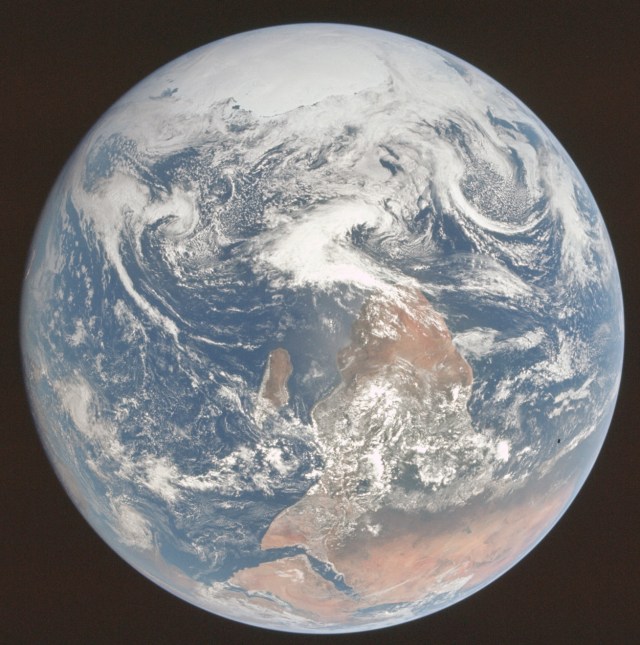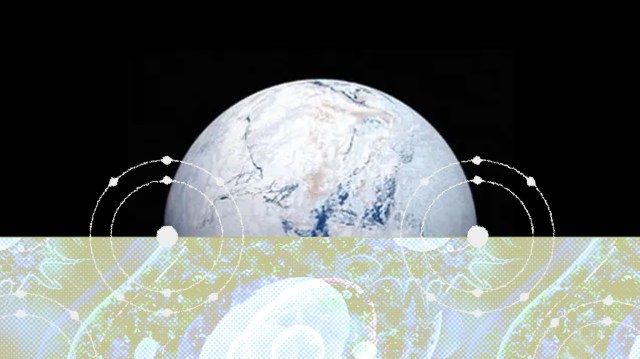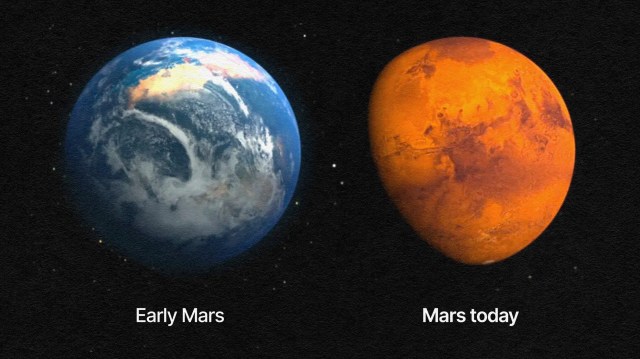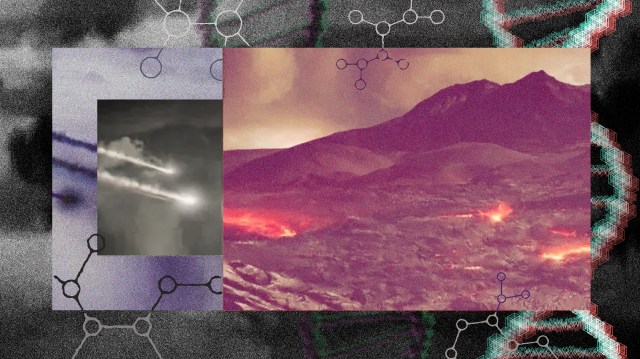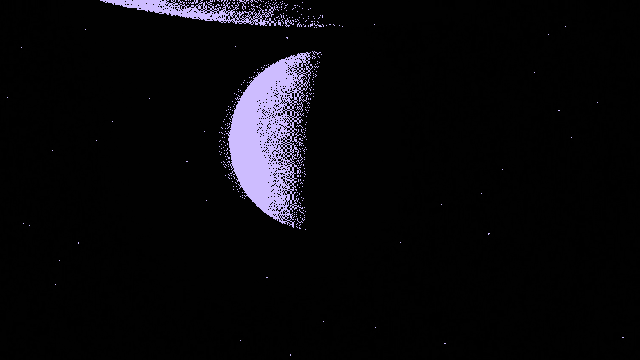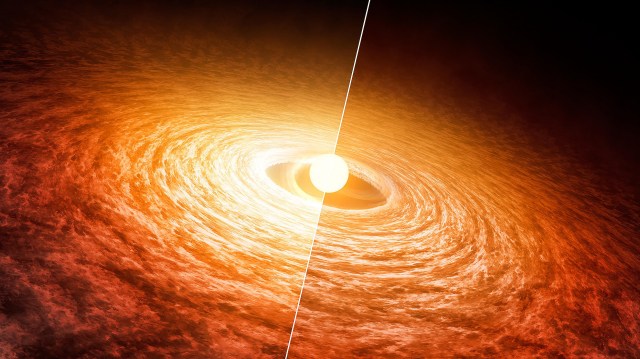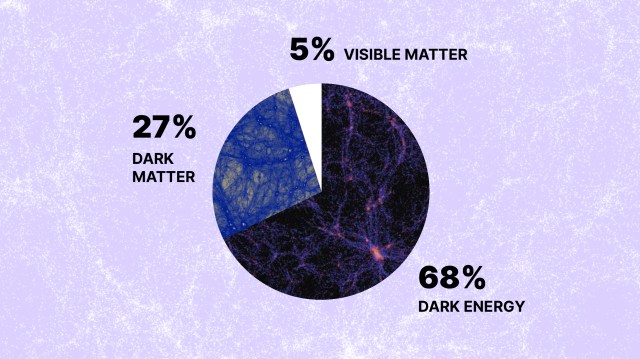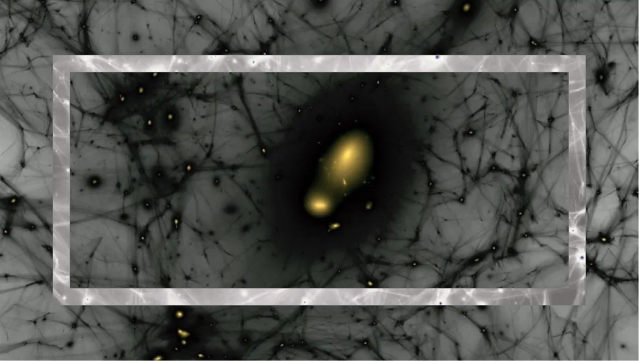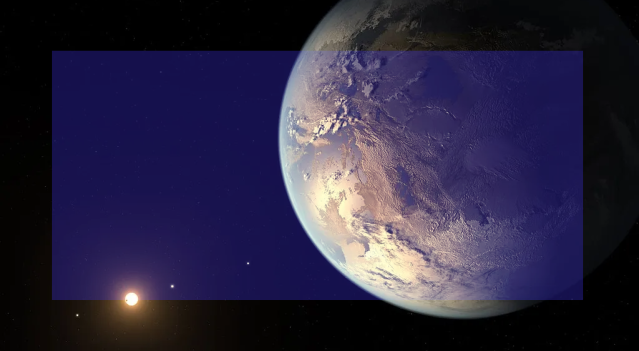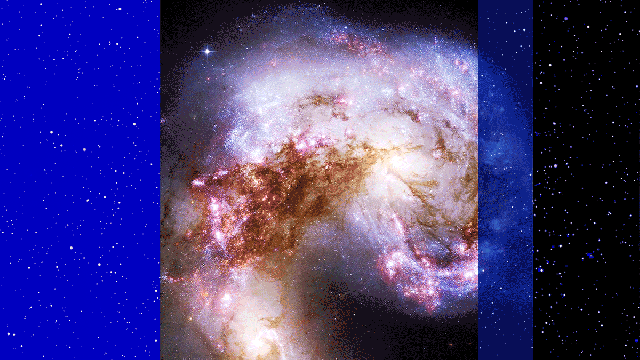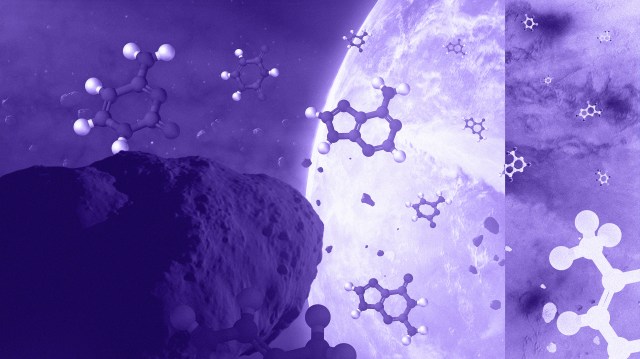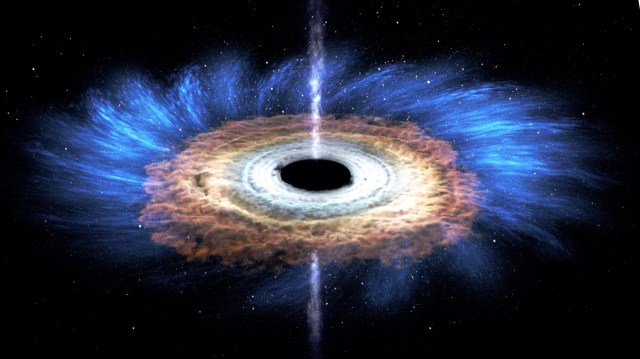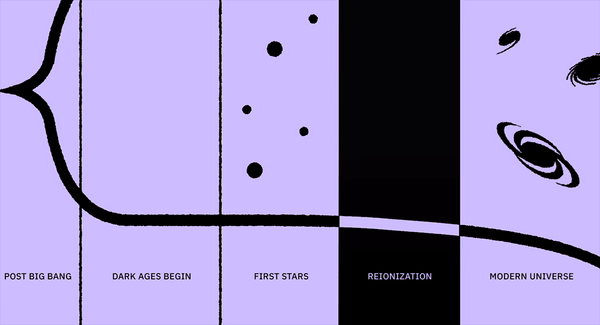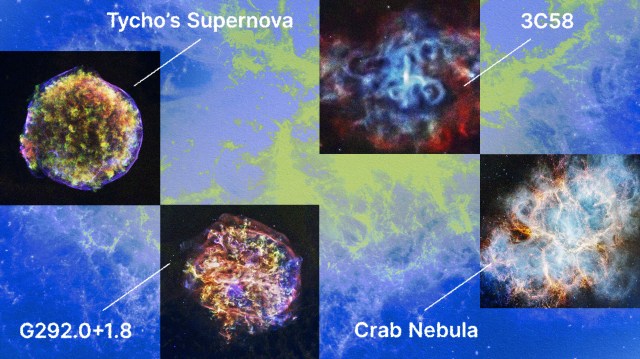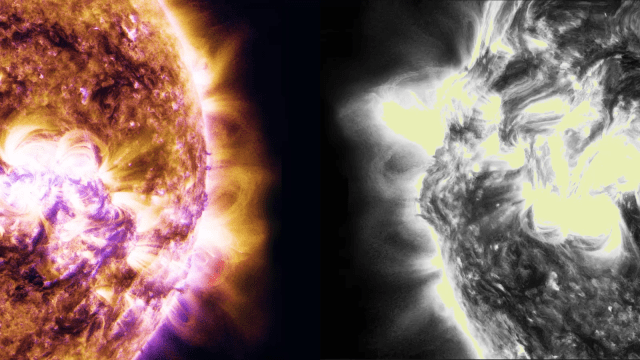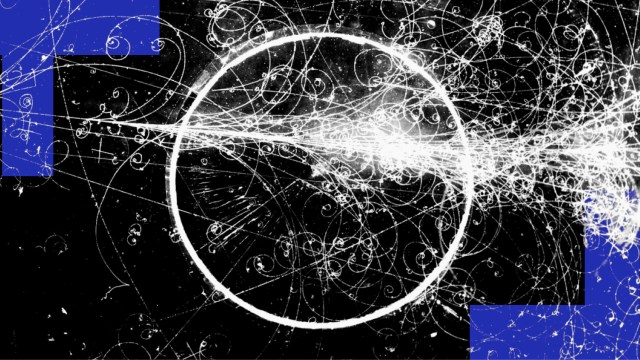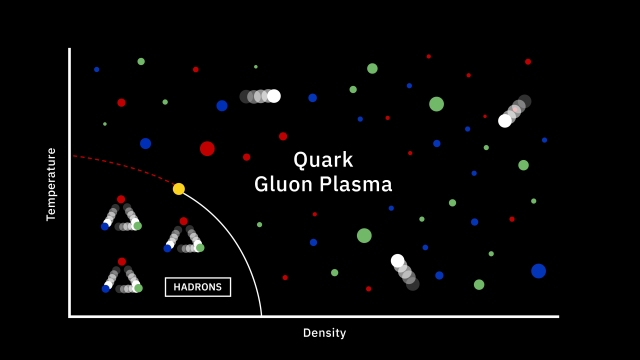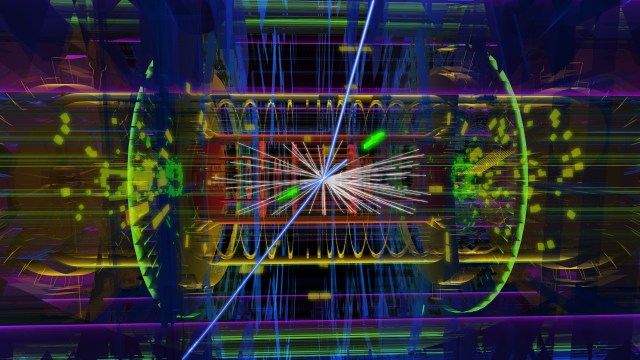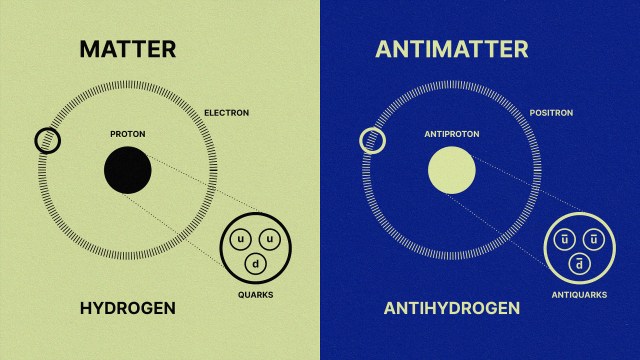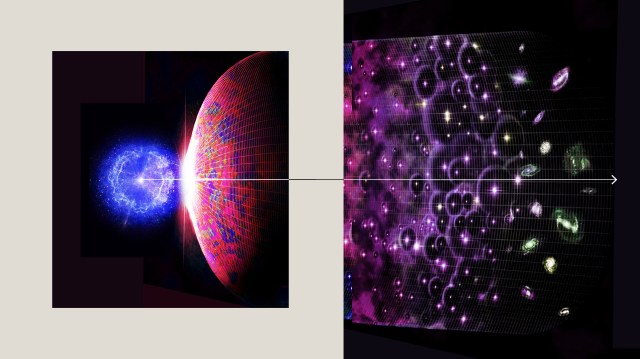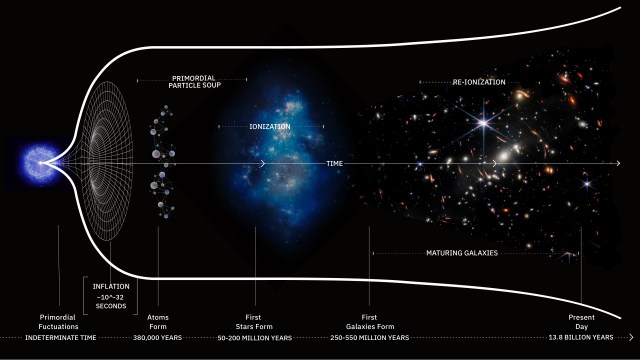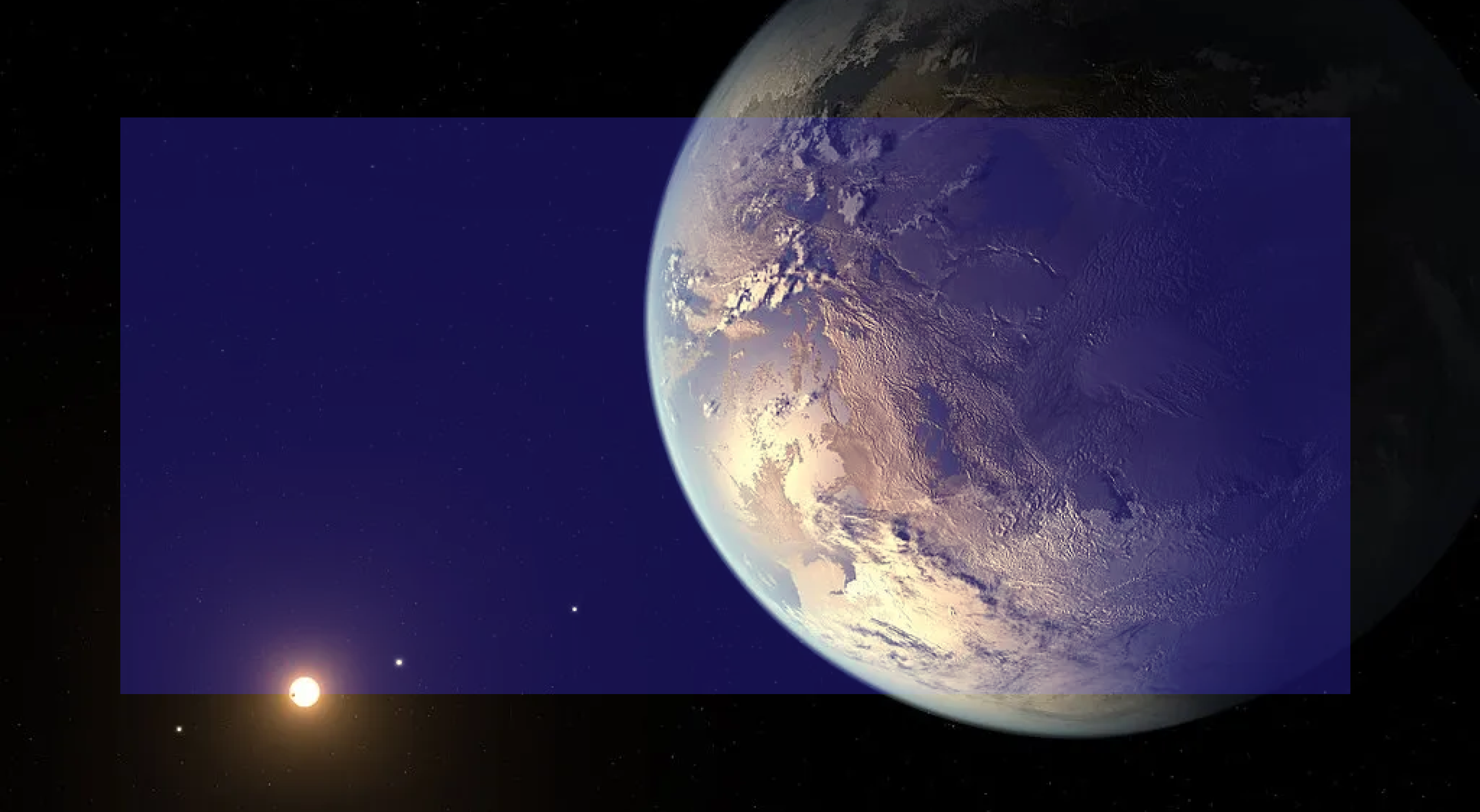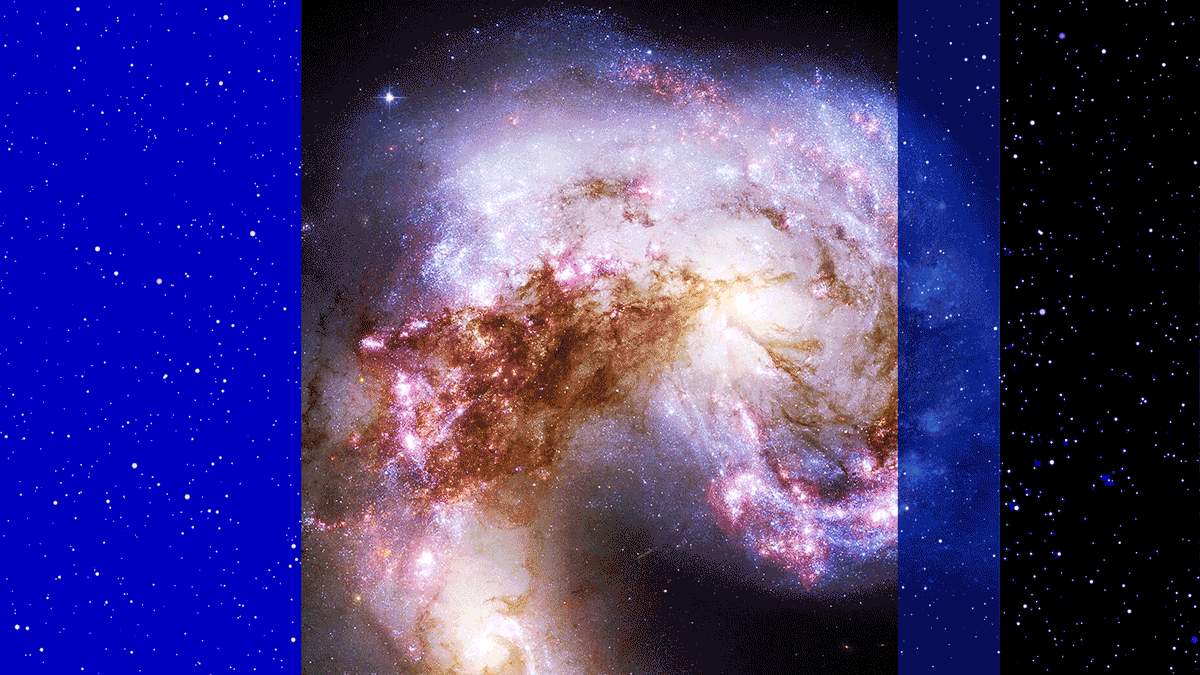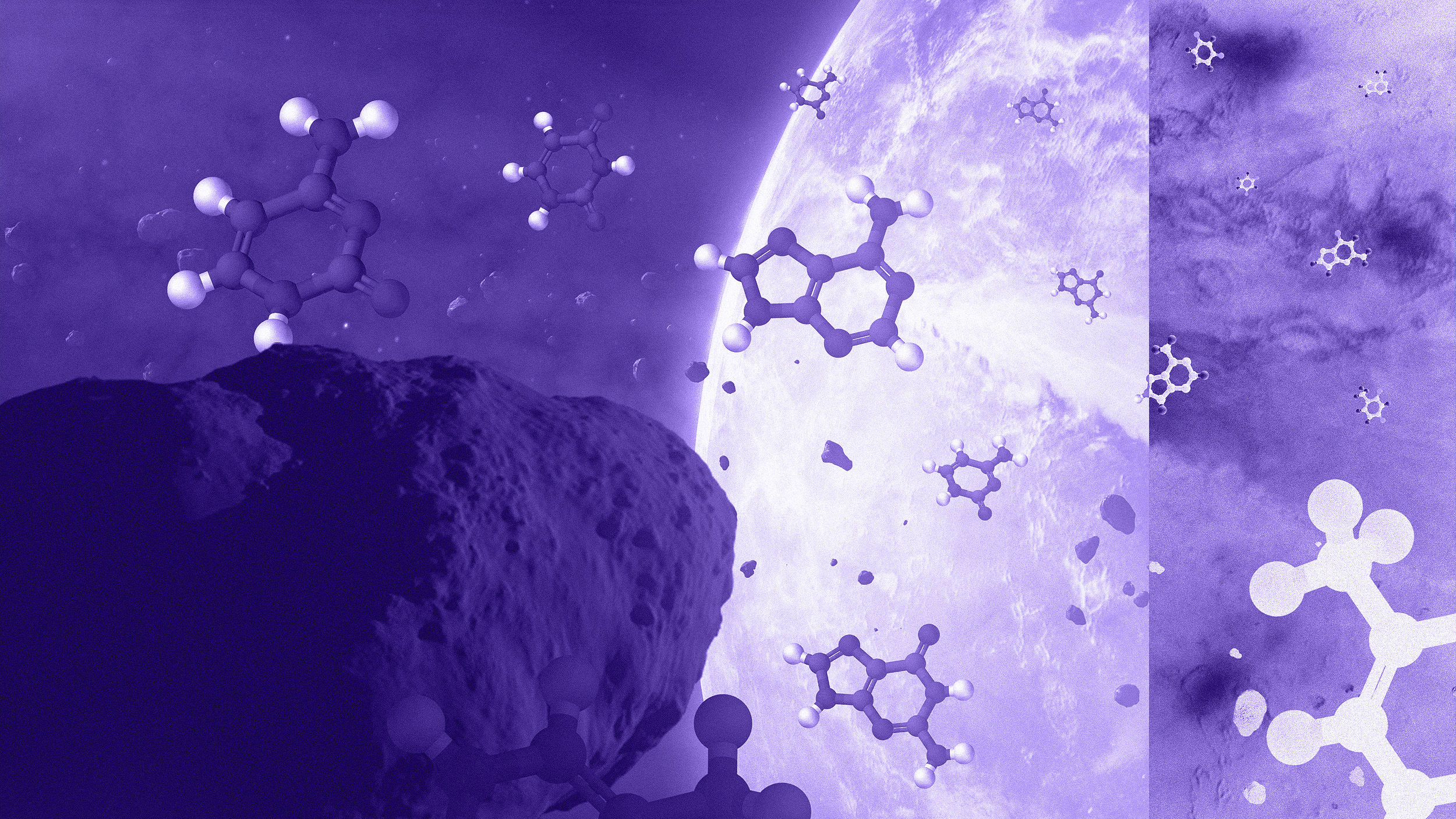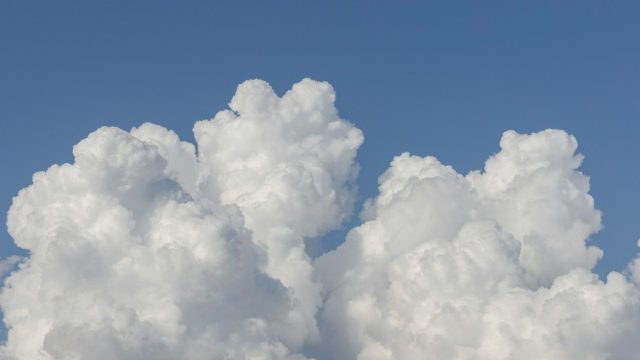What was it like when the Milky Way grew up?
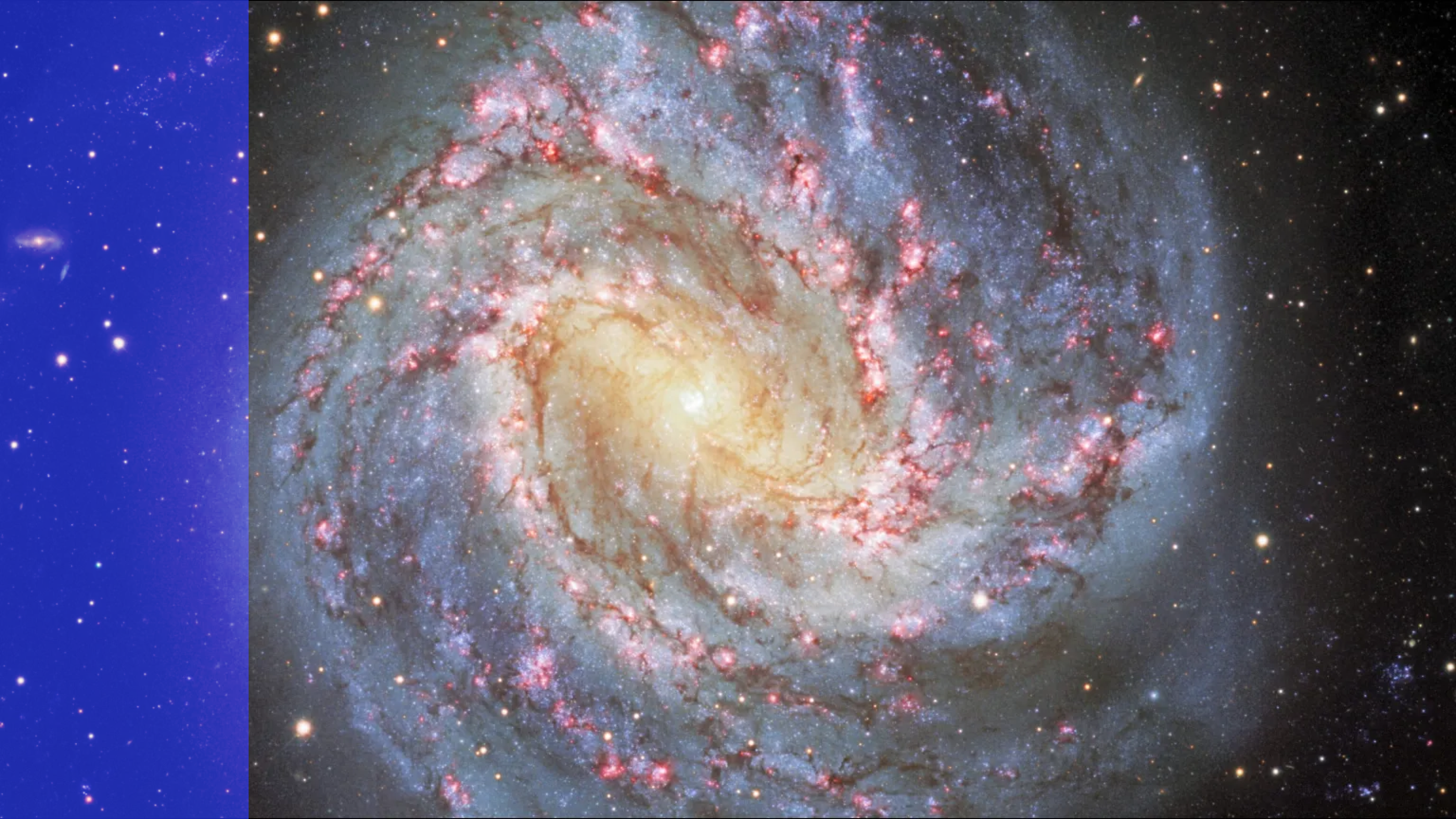
- Formed from an initial collection of stars, star clusters, and clumps of infalling matter, the seeds for our Milky Way formed early on: within the first several hundred millions years of cosmic history.
- But today, we are an advanced, late-type spiral galaxy, containing some 400 billion stars, spanning more than 100,000 light-years across, and with a dusty, gas-rich disk containing spiral arms.
- The story of how we grew up and how we came to be the way we are is a difficult one to reconstruct, but one that we’ve made enormous progress on in just the past few years. Here’s how we came to be.
The Milky Way galaxy may be just one among trillions present within the observable Universe, but it’s uniquely special for personal reasons to us: it’s our cosmic home. It’s the fertile soil from which our Sun and Solar System, including the bodies that would eventually become planet Earth, sprung some 4.6 billion years ago. All told, it’s composed of a few hundred billion stars, about a trillion solar masses worth of dark matter, a supermassive central black hole of about 4 million solar masses, and a plethora of gas and dust. And that’s no outlier; we’re actually somewhat typical of modern galaxies, with perhaps a hundred billion others similar to our own. We’re neither among the biggest nor the smallest of galaxies, nor are we in an ultra-massive cluster or found in isolation, but rather a modest galaxy group, where we’re the second-largest member.
What does make us special, though, is how evolved our galactic home has become. Some galaxies grow up quickly, exhausting their gaseous fuel and becoming “red and dead” when they lose the ability to form new stars. Some galaxies undergo major mergers, often transforming from gas-rich spirals into gas-free ellipticals in the aftermath of those collisions. Still others experience enormous tidal disruptions, leading to sweeping, distended spiral arms. Not the Milky Way, though. We grew up in exactly a typical fashion. Here’s how we got here.

At the present time, galaxies like the Milky Way are incredibly common. Here are some properties that Milky Way-like galaxies typically display:
- they contain hundreds of billions of stars,
- concentrated into a disk-like, or pancake-like shape,
- surrounded by globular clusters in a halo-like distribution,
- containing spiral arms that extend radially outward for tens of thousands of light-years in either a flocculent or multi-arm pattern,
- often with a central bar-like feature emanating from a region containing a bulge of stars,
- with a tremendous amount of gas and dust concentrated in the galactic plane,
- and young star-forming regions found where the gas and dust is densest: along the density waves within the spiral arms.
Such a behemoth, with so much total mass, exerts a tremendous gravitational pull acting on everything else nearby. You can recognize a galaxy like this from afar, from the copious amounts of starlight streaming out of it. But it couldn’t have been this way forever. What we know is our Universe began with the Big Bang some 13.8 billion years ago, and galaxies couldn’t have always been this way. In fact, if we look back far enough, we can see the differences between modern and ancient Milky Way-like galaxies start to appear.

Compared to the Milky Way and other Milky Way-like galaxies that we see today, galaxies from long ago and far away were:
- younger, as evidenced by an increase in young stars,
- bluer, since the bluest stars die the fastest,
- smaller, because galaxies merge together and attract more matter over time,
- and less spiral-like, because we only see the brightest parts of the most active, distant, star-forming galaxies.
Our galaxy today, in other words, is the result of 13.8 billion years of cosmic evolution, where large numbers of small proto-galaxies merged together, forming one larger-than-average galaxy, while continuously attracting additional matter into itself. We are what remains after countless other galaxies have been swallowed by our own.
The story of how we built our Milky Way is like building a giant structure out of LEGOs. Only, instead of the LEGOs remaining the same over time, they’re actively changing form as we assemble our structure. It would be like starting with all the pieces to put together 100 different X-Wing LEGO fighters, and winding up with a Star Destroyer when we were done. One of the ways that we can learn this is by surveying the globular clusters within our galactic halo, and finding that many of them have properties that correlate with them infalling into and joining the Milky Way at various critical points in cosmic history: evidence of hierarchical mergers in our cosmic past.
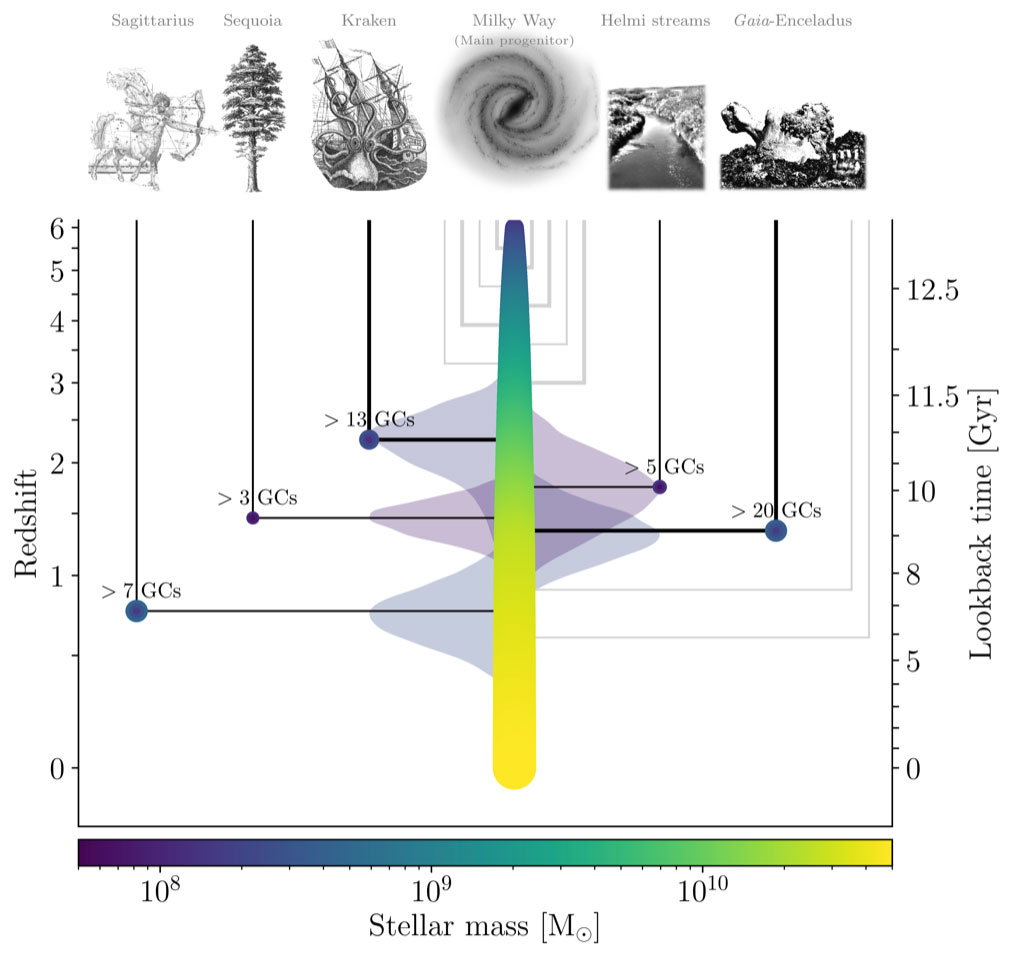
Galaxies, you see, don’t just grow by attracting other galaxies and merging together to form larger ones. Galaxies also experience evolution on their own, meaning that they:
- rotate,
- form stars,
- funnel matter in toward the center,
- generate density waves along their spiral arms,
- attract additional matter from outside the galaxy along cosmic filaments,
- and change shape and orientation based on the other galaxies and matter that falls into them.
While the earliest proto-galaxies that eventually grew into the Milky Way may have formed somewhere around 200-250 million years after the Big Bang, cosmic evolution continued all throughout that time.
The first stage that led to the earliest proto-galaxies was the formation of the earliest stars and star clusters, which took around 100 million years, and formed out of the pristine material (hydrogen and helium) left over from the Big Bang. These star clusters evolved quickly, resulting in a very rapid end-of-life for their stars. When those stars died, they polluted the interstellar medium with heavy elements that then gave rise to the second generation of stars. By the time that 200-to-300 million years had gone by, numerous star clusters had merged together with one another and drawn in material from their intergalactic surroundings, giving rise to the very first full-fledged galaxies.
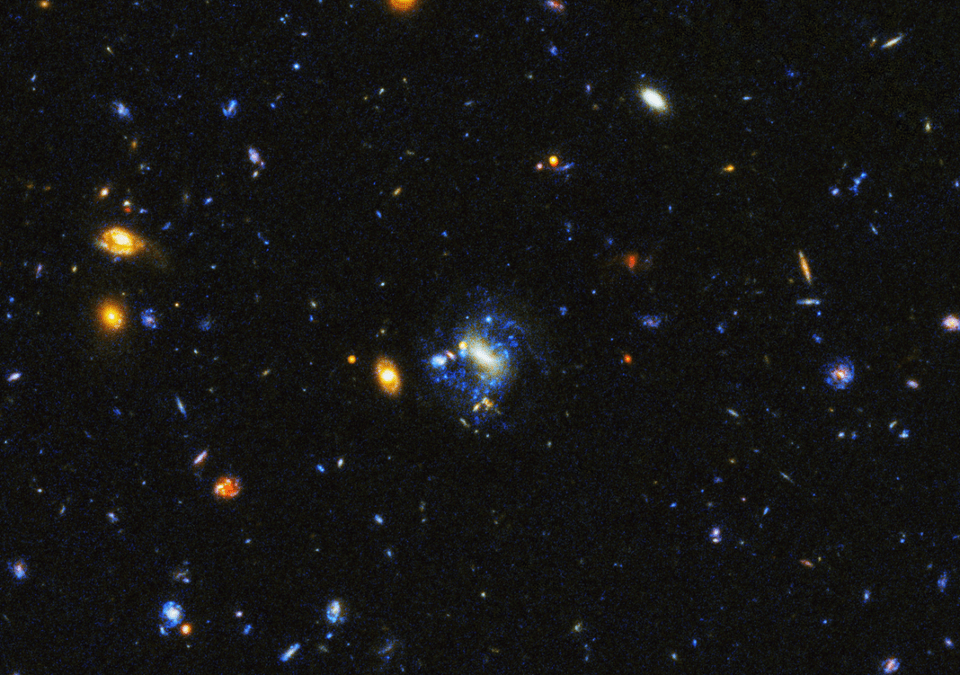
The cosmic web then begins to take shape. As more time goes by, gravitation, limited by the speed of light, can extend its reach greater and greater distances, causing larger-scale clumps of matter to fall in toward one another. When a clump that’s smaller than the early galaxy falls in, it gets tidally torn apart and funneled into the galaxy’s interior gently and slowly, where its constituent material simply gets absorbed over time.
These events, known as minor mergers, are common, and any galaxy that falls into a larger one with up to about a third of the larger one’s mass falls into this category. Any internal structures in the larger galaxy, such as spiral arms, star-forming regions, a bar, or a bulge, should all remain intact. Meanwhile, the additional gas and dust added by the “swallowed” galaxy provides new fuel for new generations of stars. Star formation usually intensifies during merger events, even minor ones. For the first 2 or 3 billion years of cosmic history, this process was exceedingly common.

As time goes on and the Universe expands, however, mergers become, on average, less common but more major. Galaxies clump and cluster together into groups of many different sizes, but occasionally can form large galaxy clusters with hundreds or even thousands of times the mass of our own Local Group. These dense galaxy clusters are some of the most spectacular sights in the Universe, but they’re also relatively rare: the majority of mass and the majority of galaxies are found in small groups like our own, not in the massive clusters that we see so prevalently in our Universe. By the time the first 4 or 5 billion years of cosmic history had gone by, it became clear we’d never become part of a massive cluster; nearby galactic groups such as the Leo Group, the M81 Group, and the Virgo Cluster were all beyond our reach.
It’s important, however, that if we want to keep our galaxy Milky Way-like, with lots of gas, a set of spiral arms, and ongoing star-formation inside, that these mergers remain small. If we experience a major merger, where two similarly-sized galaxies collide, they can induce an enormous burst of star formation, which can:
- use up a large amount of the available star-forming gas,
- expel the remainder of the gas from the post-merger galaxy,
- and “mix up” the stellar matter in the galaxy as well.
When major mergers occur, there’s a chance that all three of the aforementioned events will occur as a result. It may not be the result of most major mergers, but in a rich environment where major mergers are common, giant ellipticals are also common; where major mergers are rare, disk galaxies, such as spirals, are far more ubiquitous.
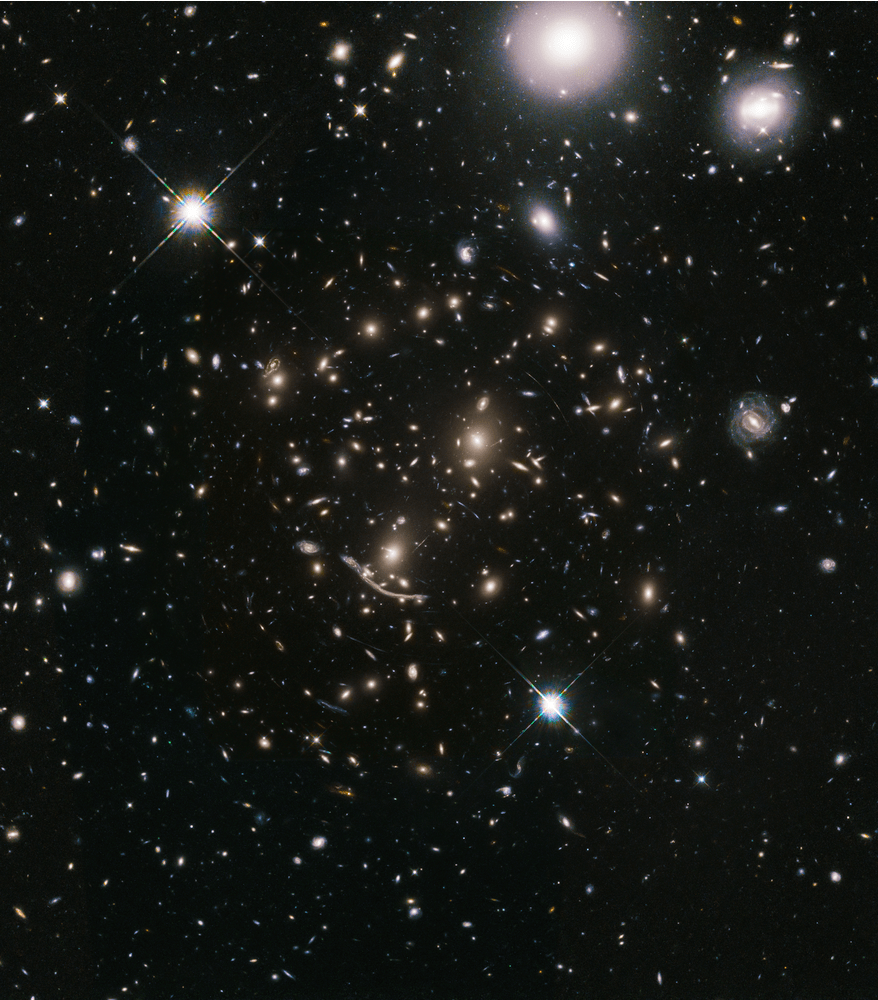
The Milky Way that we inhabit, however, has clearly remained a disk galaxy with multiple spiral arms and ongoing star-formation still occurring inside: we have not become a giant elliptical, which tells us that there have not been very many (if any) major mergers that have occurred in our galactic past. If such an event had occurred, we might have expected that we’d see a large population of stars that all appeared to form throughout the Milky Way at some specific time long ago. There is no such population in our own galaxy, but there is one in our neighbor Andromeda: an indication that perhaps, around 2 or 3 billion years ago, what was once the Local Group’s third largest galaxy, behind only Andromeda and ourselves, merged with Andromeda to produce the modern-day “big sister” galaxy right next door that we can see with the naked eye in our own night skies.
It takes a lot of mass gathered together in two adjacent places, built up over time, to create a major merger. So long as a galaxy is massive enough (as in Milky-Way sized or comparable) and gas-rich, there will be material available to support and enable the formation of new stars. So long as galaxies have angular momentum and a preferred rotation axis (which they inevitably do in the absence of a major merger), and so long as they have experienced enough time to settle down into a stable shape (which, 13.8 billion years into our cosmic history, they all would have had), we expect them to have a spiral shape and structure internally.
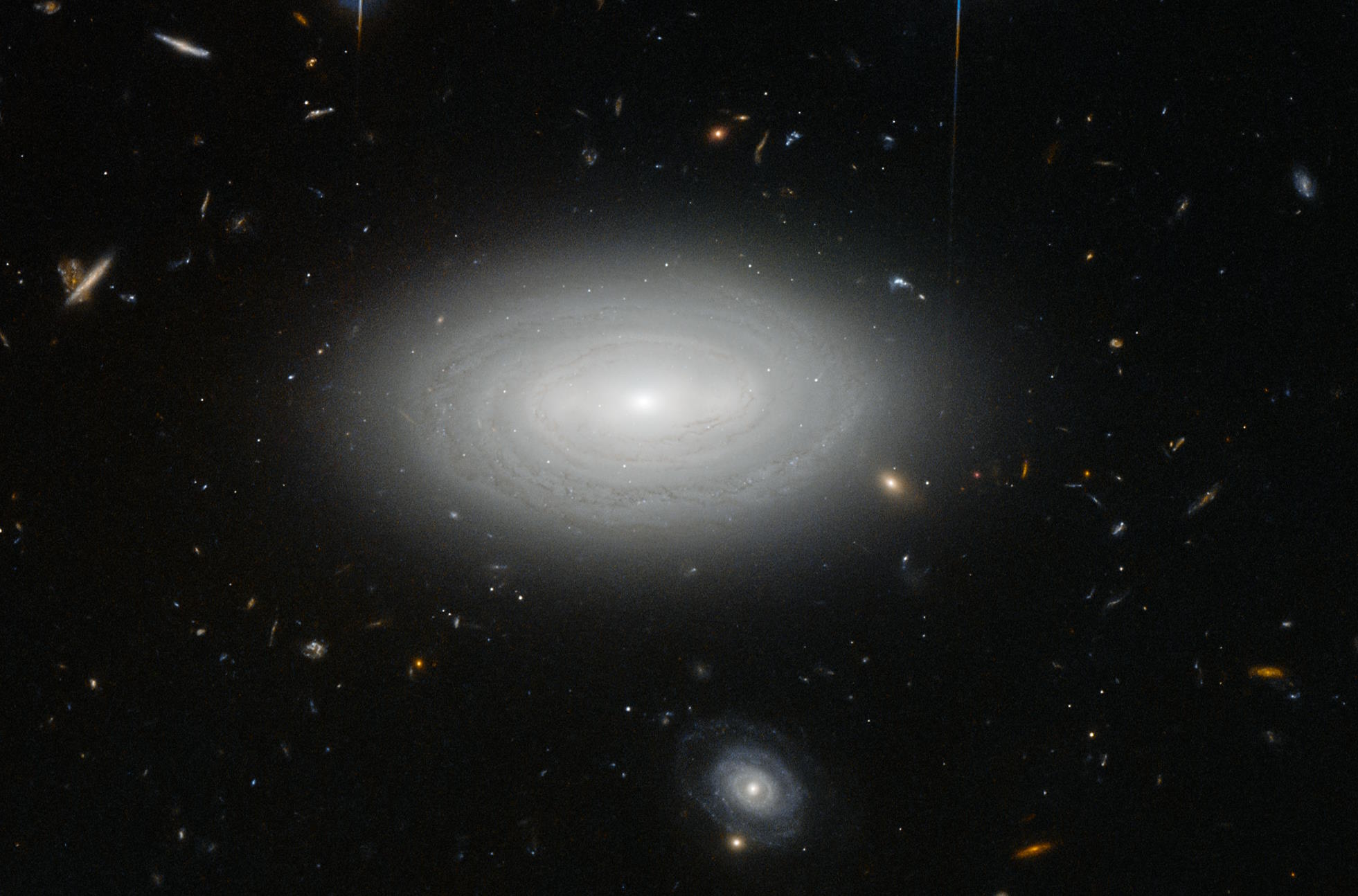
Our Milky Way likely grew from a series of proto-galaxies that settled down into a spiral shape, then gradually gobbled up many of the smaller galaxies present in its vicinity: galaxies that were once a part of the Local Group, but whose existence has been erased by the cosmic violence of galactic cannibalism. We didn’t even gather the majority of those small galaxies or of the matter in our Local Group; that honor goes to our neighbor, Andromeda. Nor are we done with the merger process: there are satellite galaxies merging with us today, and a few galaxies on our outskirts, like the two Magellanic Clouds, that will likely be devoured in the next few hundred million years (perhaps surviving for up to a couple of billion years) or so.
In biology, the creatures that survive obey the law of natural selection: the survival of the fittest, and the ones that are the most adaptable to changing conditions. For galaxies, however, the story is very different. The cosmic story that brought the Milky Way to be is one of survival of the largest and most massive: the objects with the greatest inertia, and the greatest resistance to being significantly disrupted by an encounter with another galaxy. When it comes to dominating the galaxy population over long periods of time, mass is the overwhelming factor in determining what, and who, survives.
Initially, clumps of matter form in a relatively random, asymmetric shape: something that I often think of as “potato-like,” but that astrophysicists more often approximate as a triaxial ellipsoid: a distribution of matter where one of the three 3D axes is shorter than the other two. As time goes on, the shortest axis collapses first, causing the normal matter within it to “pancake,” or go splat. This winds up forming a flat, disk-like shape, and that disk has angular momentum, and so rotates. As it rotates, the structure within it, such as spiral arms, begins to wind up. As a consequence, a disk galaxy’s spiral arms became more pronounced and developed over time, accumulating more and more turns within them.
Spurs emerge from those arms, and gravitational interactions both internally and from external influences lead to the formation of stars along the tail ends of a galaxy. As additional gas flows into the galaxy’s outskirts, it eventually winds up getting funneled toward the center. As galaxies continue to evolve, they also develop many recognizable features:
- a central bulge forms where the matter is densest,
- a central bar develops and grows over time,
- the dynamics of gas and stars causes the galaxy to compress along the short axis and extend farther in the disk-like direction, becoming an even thinner disk,
- and finally, as gravity does the inevitable, all the galaxies bound together within a group or cluster will eventually merge.
In some sense, we already know that our fate is sealed. The Milky Way itself is destined, approximately 4 billion years from now, to begin merging with Andromeda, and then in another 3 billion years, that merger process is expected to reach completion: resulting in a new, larger, single galaxy that already has the rather poetic name of Milkdromeda.

The cosmic story that led to the Milky Way is a story of constant, but not necessarily ultra-violent, evolution. We likely formed from hundreds or even thousands of smaller, early-stage proto-galaxies and early galaxies that merged together. The spiral arms that we see today were likely formed many times by interactions, only to re-form from the rotating, gas-rich nature of an evolving, gas-rich, disk galaxy. Star formation occurred inside in waves, often triggered by minor mergers or gravitational interactions, but also occurring during quiet periods in our galaxy’s life: quiescent star formation. Finally, these waves of star-formation, as stars live-and-die, bring along increases in supernova rates, stellar cataclysms, and heavy metal enrichment of the interstellar medium.
These changes don’t occur all-at-once and abruptly, but rather in a continuous fashion. They were not just a part of our cosmic past, but are still occurring, and will come to an extremely spectacular conclusion just a few billions of years in the future, as all the galaxies of the Local Group eventually will coalesce and merge together. Every single galaxy has its own unique cosmic story, and the Milky Way is just one typical example of a somewhat mature, larger-than-average but not among the largest galaxies, found within the Universe. What’s important to recognize is that the story hasn’t ended yet. As grown up as we are, the Milky Way, our cosmic home, is still evolving.
